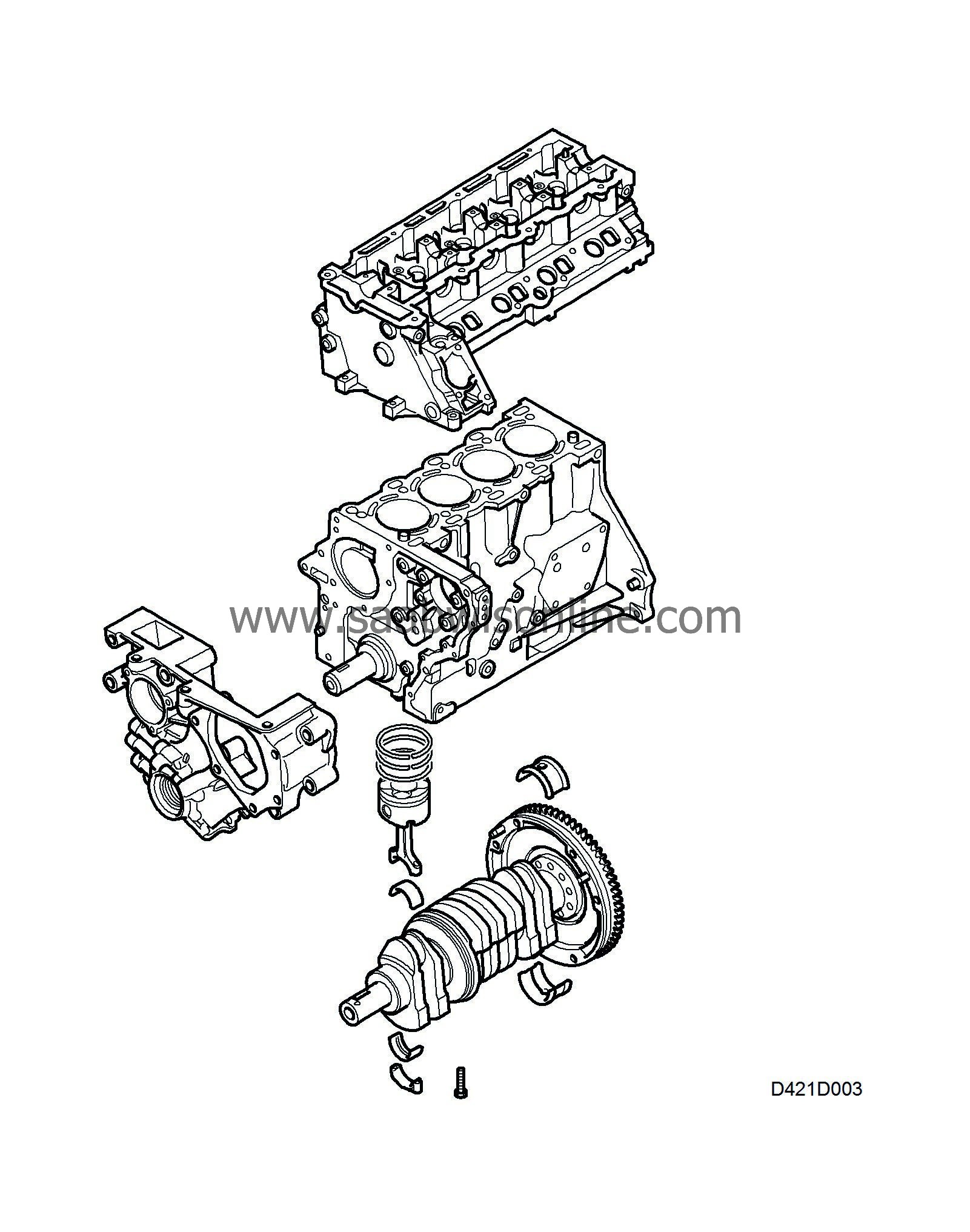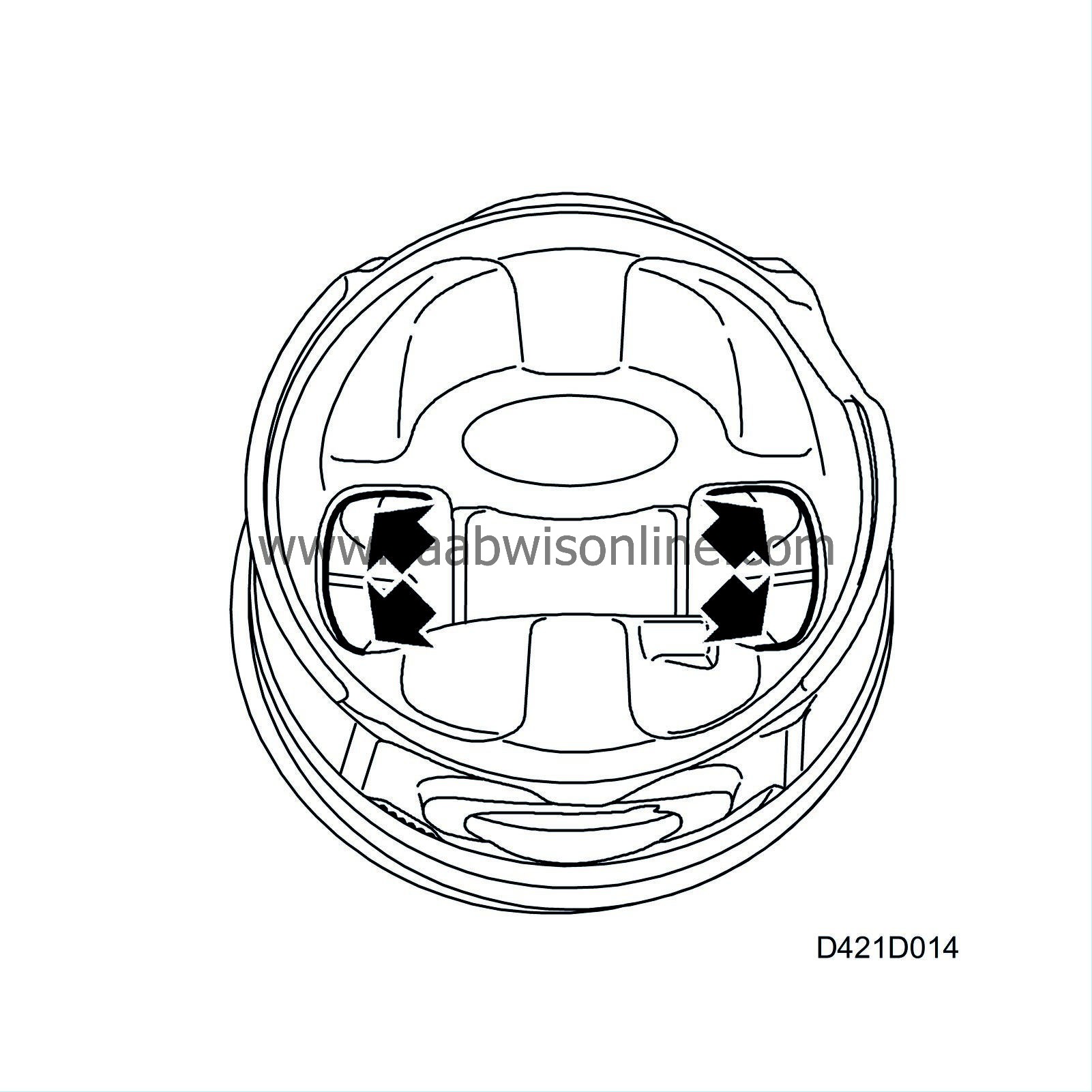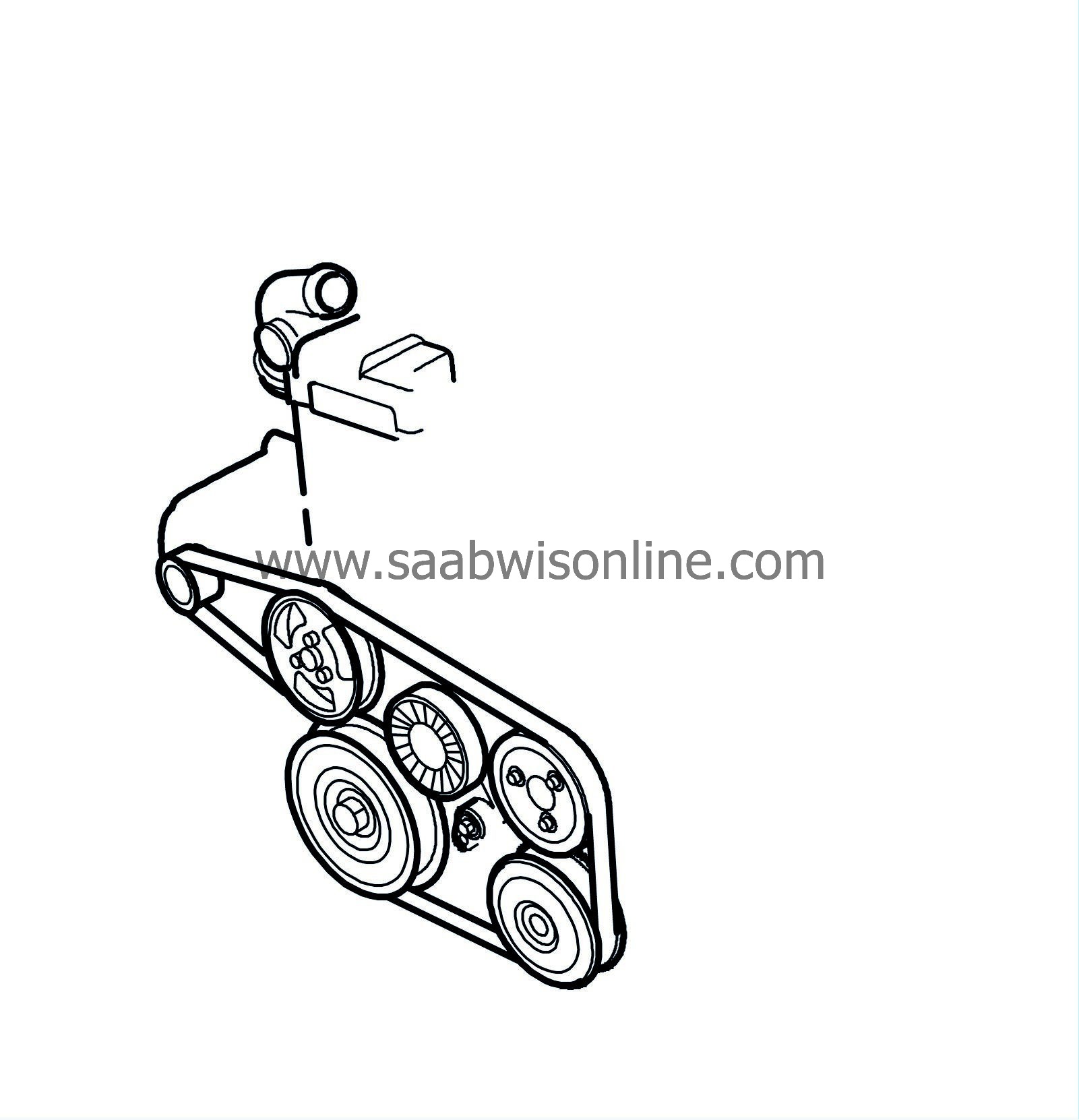PRE-RELEASE
Engine block
| Engine block |
The total swept volume of 2.2 litres delivers a high torque even at low engine speeds, which is advantageous when driving in normal traffic conditions.
The balancer shafts suppress vibration and the forces from moving parts in the engine, and lower the level of engine noise.
| Cylinder block |

The cylinder block is a special one-piece casting with the cylinder bores drilled directly into the block. Special oilways for the lubricating system are also drilled into the block. The cylinder block must not be planed.
The balancer shafts are fitted in a separate unit under the crankshaft. The crankshaft drives them via a chain.
| Cylinder head |
The cylinder head is precision-cast in light alloy and bolted to the cylinder block. There are 4 valves per cylinder with centrally placed injectors. There are twin intake passages but the engine management system controls only one throttle, which opens and closes the intake passage to the each cylinder. In this way, the swirl in the cylinders is improved, giving more efficient combustion of the fuel, i.e. the engine reaches a high degree of efficiency. The cylinder head is sealed with a metal gasket, which is available in a number of thicknesses. The cylinder head must not be planed.
As well as reducing emissions and fuel consumption, the engine torque is relatively high at 290 Nm. The engine has therefore been reinforced around the cylinder head bolts and the valve seats have been fitted with several reinforcement ribs.
| Timing cover |
The timing cover is designed to fit the shape of the cylinder block. The timing cover houses the oil pump and coolant pump. The cover is sealed with a metal gasket with vulcanized rubber elements.
| Crankshaft assembly |

The forged crankshaft has ground, induction-hardened bearing journals. This gives a hard surface to protect against wear. The crankshaft is mounted in 5 main bearings, of which the centre bearing also acts as a thrust bearing. There are oilways drilled in the shaft for lubrication. All the main bearing shells are exchangeable.
| Connecting rods |
The connecting rods are forged and fitted with bearing bushes for the gudgeon pins.
The gudgeon pins are of the fully-floating type, being free to turn in both the piston and connecting rod. Axial movement of the gudgeon pin is limited by circlips in the gudgeon pin holes.
| Pistons |
The pistons are manufactured in light alloy and have grooves for two compression rings and one oil scraper ring. The combustion chamber is located in the top of the piston.
The upper compression ring is flat. The lower compression ring has oil-scraper characteristic and is slightly wider than the upper one. The actual oil scraper ring is of a three-piece design.

The engine's pistons have cooling ducts for effective piston cooling. The nozzles that spray oil into the pistons are designed to provide effective cooling.



